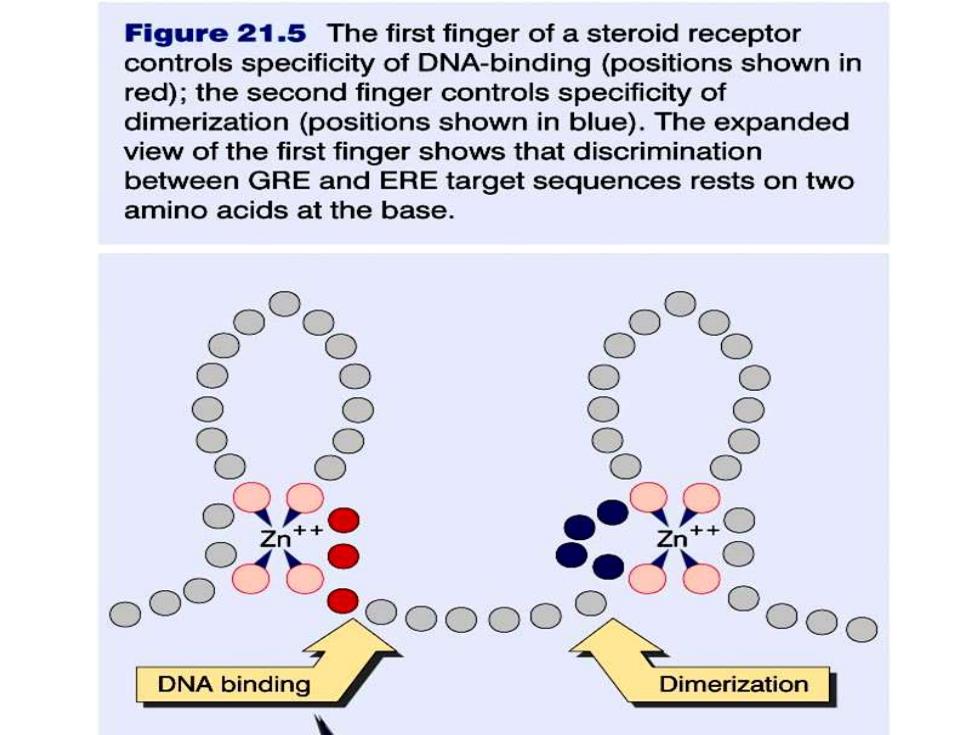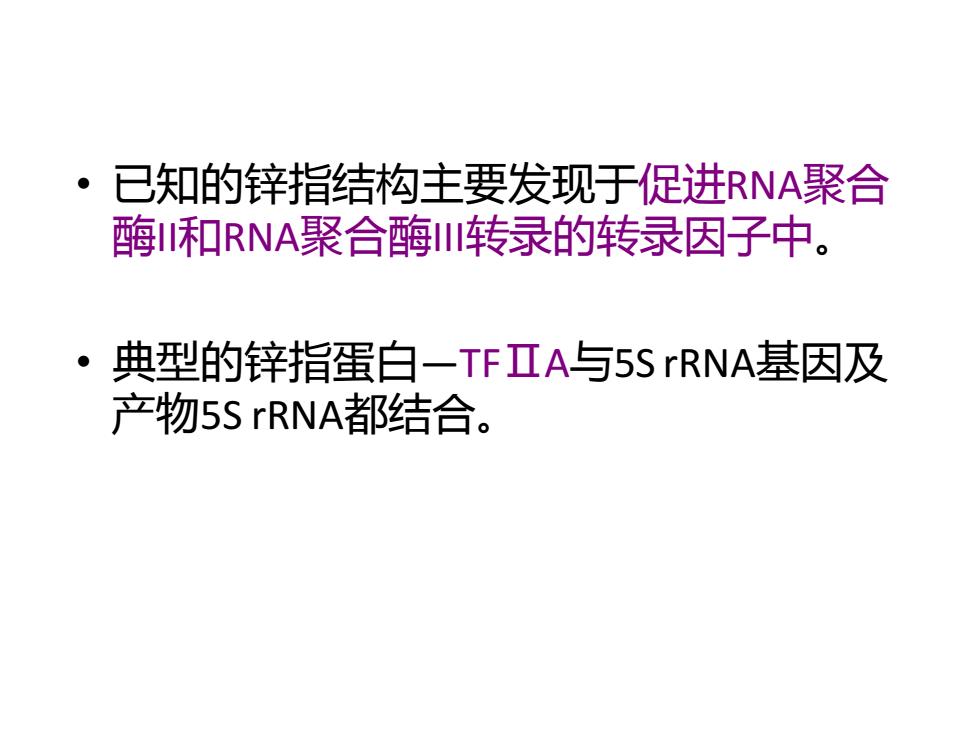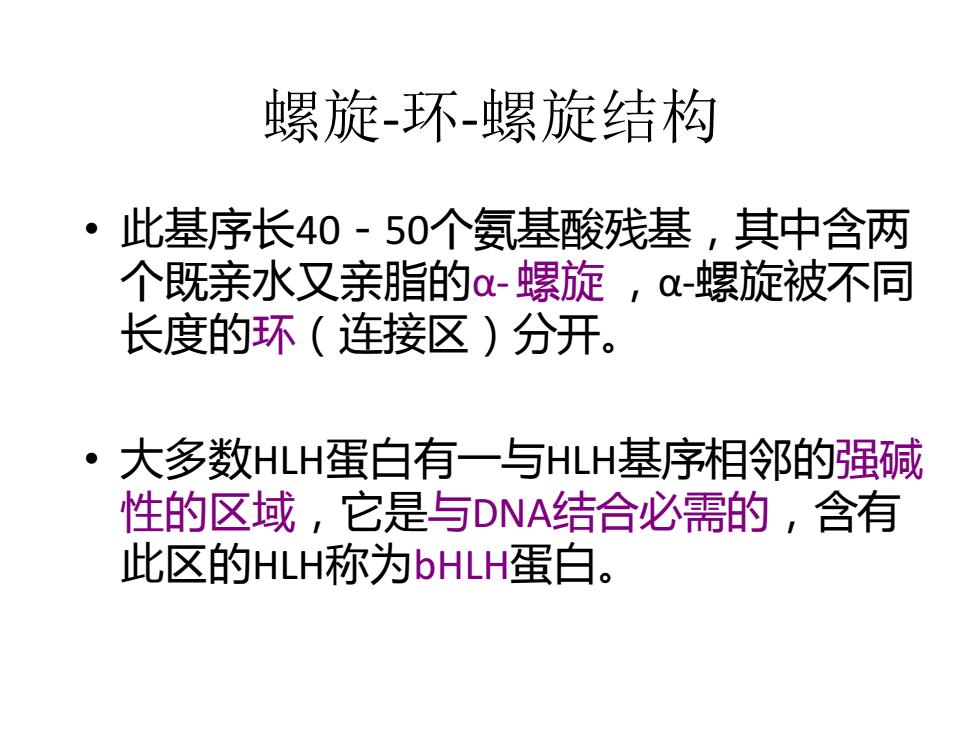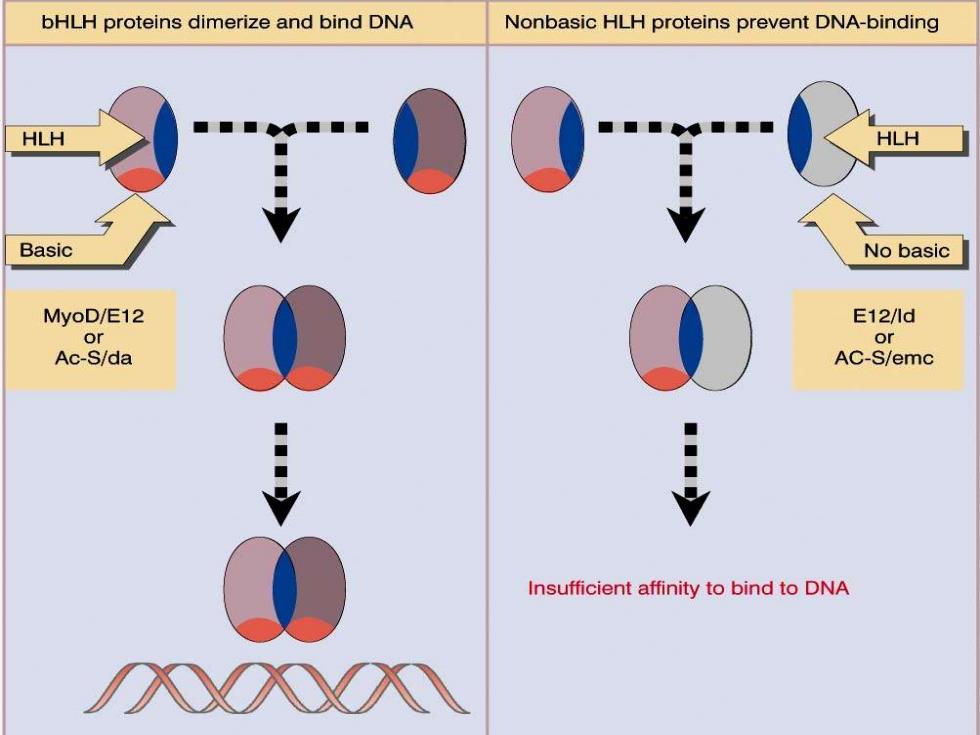
Figure 21.5 The first finger of a steroid receptor controls specificity of DNA-binding(positions shown in red);the second finger controls specificity of dimerization(positions shown in blue).The expanded view of the first finger shows that discrimination between GRE and ERE target sequences rests on two amino acids at the base. ○○ DNA binding Dimerization

Cys Cys 2n++ Ser ■■■ Cys Cys Glucocorticoid Estrogen specificity specificity Same sequence in both receptors Different sequence in each receptor

• 已知的锌指结构主要发现于促进RNA聚合 酶II和RNA聚合酶III转录的转录因子中。 • 典型的锌指蛋白—TFⅡA与5S rRNA基因及 产物5S rRNA都结合
• 已知的锌指结构主要发现于促进RNA聚合 酶II和RNA聚合酶III转录的转录因子中。 • 典型的锌指蛋白—TFⅡA与5S rRNA基因及 产物5S rRNA都结合

螺旋-环-螺旋结构 • 此基序长40-50个氨基酸残基,其中含两 个既亲水又亲脂的α-螺旋 ,α-螺旋被不同 长度的环(连接区)分开。 • 大多数HLH蛋白有一与HLH基序相邻的强碱 性的区域,它是与DNA结合必需的,含有 此区的HLH称为bHLH蛋白
螺旋-环-螺旋结构 • 此基序长40-50个氨基酸残基,其中含两 个既亲水又亲脂的α-螺旋 ,α-螺旋被不同 长度的环(连接区)分开。 • 大多数HLH蛋白有一与HLH基序相邻的强碱 性的区域,它是与DNA结合必需的,含有 此区的HLH称为bHLH蛋白

bHLH proteins dimerize and bind DNA Nonbasic HLH proteins prevent DNA-binding HLH HLH Basic No basic MyoD/E12 E12/ld or or Ac-S/da AC-S/emc Insufficient affinity to bind to DNA